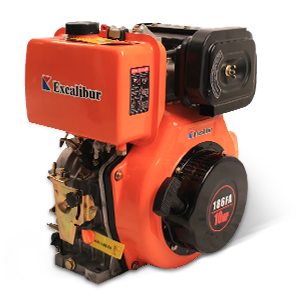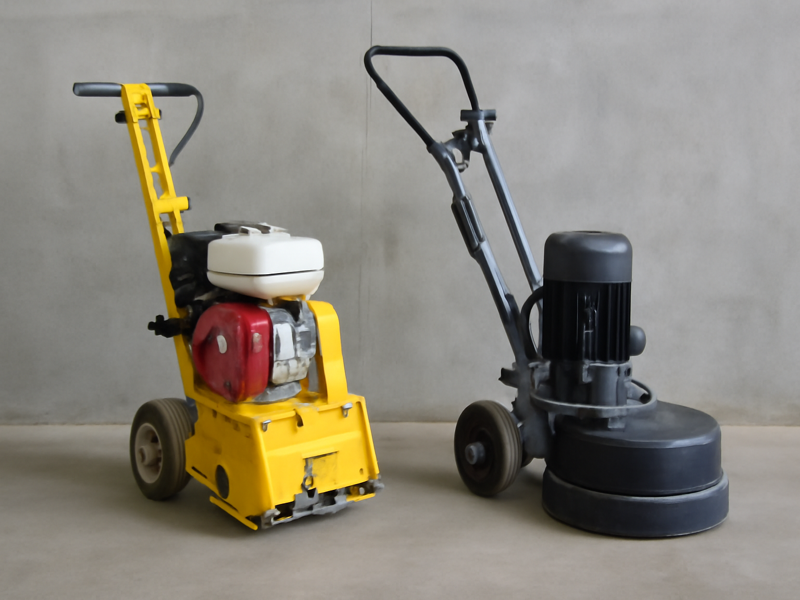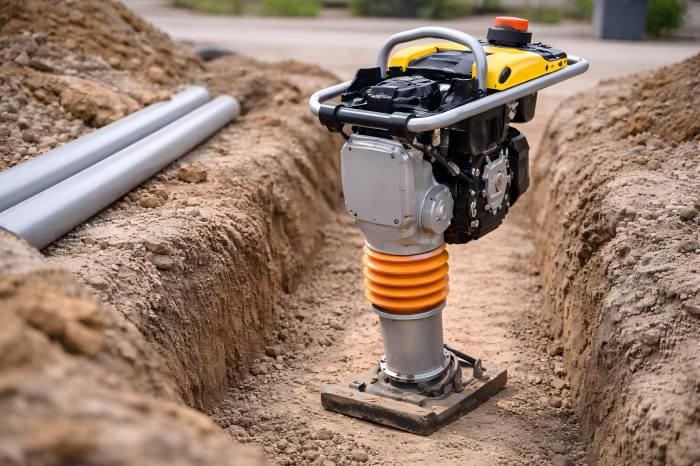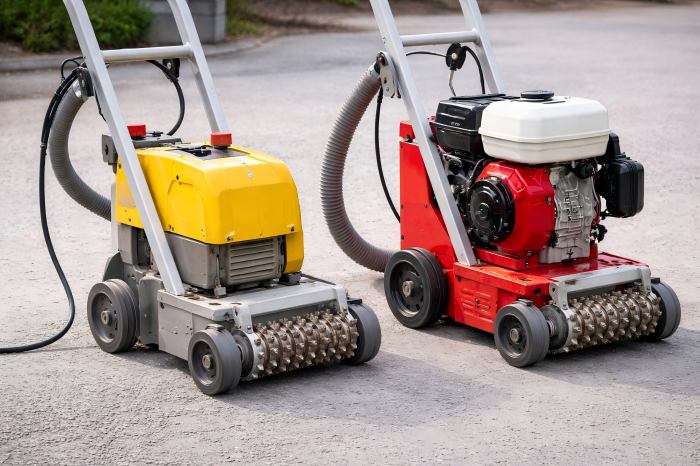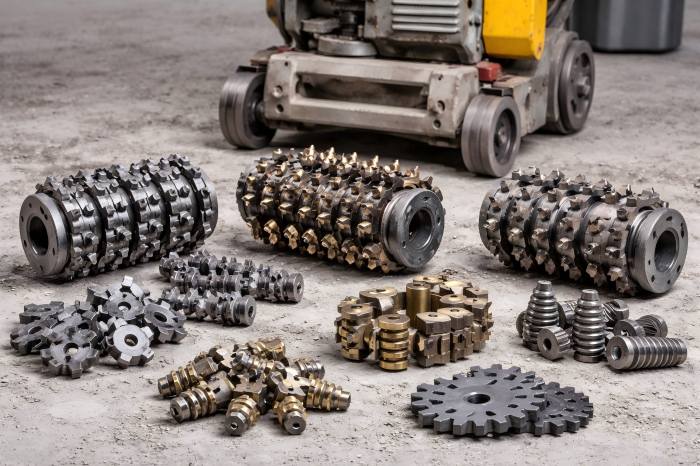Two of the most commonly used tools in concrete surface preparation are concrete scarifiers and concrete grinders. While both tools are designed to smooth, level, and prepare concrete surfaces, their distinct differences make them suitable for different tasks.
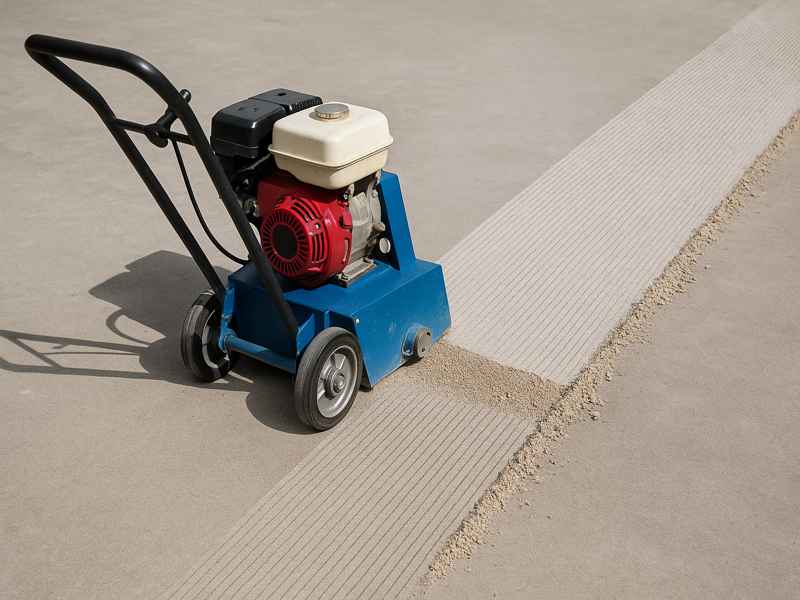
What Is a Concrete Scarifier?
It uses a set of rotating drums with sharp steel or carbide teeth to remove layers of concrete. Scarifiers are often used to level uneven concrete surfaces, remove thick coatings, and prepare concrete for new finishes or treatments.
Key Features of a Concrete Scarifier
Aggressive Material Removal: Scarifiers can remove large amounts of concrete, making them ideal for heavy-duty surface preparation.
Wide Cutting Path: Scarifiers have a wide cutting width, allowing them to quickly cover large areas efficiently.
Variety of Cutters: The drums on a scarifier can be fitted with different types of cutters depending on the job requirements, such as carbide cutters for rough grinding or steel cutters for finer results.
Depth Control: Most scarifiers come with adjustable depth control to remove material to a precise depth, making them versatile for different surface prep tasks.
| Pros | Cons |
| √ High material removal efficiency | × Can leave a rough surface |
| √ Ideal for leveling and removing coatings | × Noisy and can create dust |
| √ Adjustable depth control for precision | × Can be difficult to maneuver in tight spaces |
| √ Wide cutting path for large areas | × Expensive compared to other tools |
| √ Suitable for aggressive surface preparation | × Requires more maintenance |
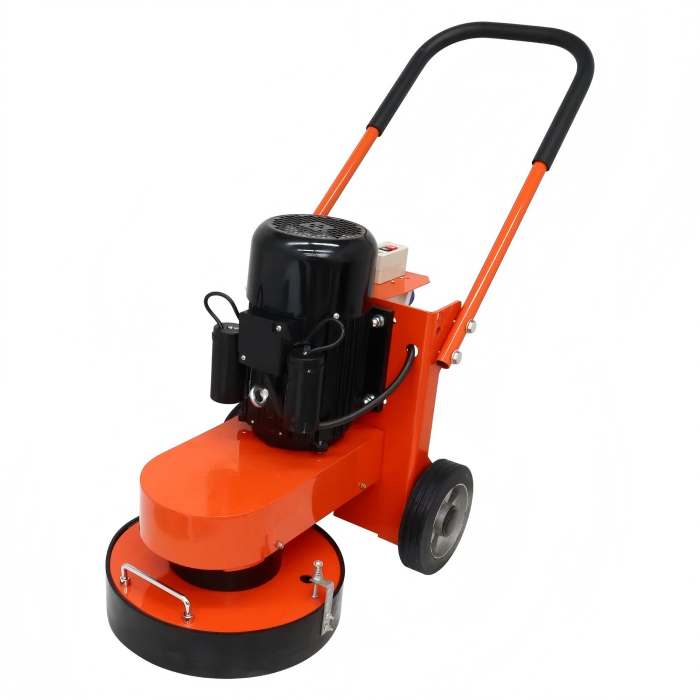
What Is a Concrete Grinder?
Unlike a scarifier, a grinder is designed for finer, more delicate work, such as polishing, smoothing, and removing minor imperfections from the concrete surface. Concrete grinders are more commonly used for finishing touches or for polishing existing floors.
Key Features of a Concrete Grinder
Fine Surface Finishing: Grinders are used to smooth out concrete surfaces after scarifying or to polish concrete floors to a high-gloss finish.
Narrow Cutting Path: Grinders typically have a narrower cutting width, making them suitable for smaller areas and detailed work.
Diamond Abrasives: Concrete grinders often use diamond abrasives, which are durable and effective for polishing and smoothing.
Low Material Removal: Grinders remove much less material than scarifiers, making them suitable for fine-tuning the surface or creating smooth finishes.
| Pros | Cons |
| Produces a smooth, polished finish | Limited material removal capacity |
| Ideal for surface finishing and minor imperfections | Not suitable for aggressive surface preparation |
| Can be used for polishing and grinding small areas | May not be effective for large-scale projects |
| Can work with various abrasive attachments | Requires multiple passes for rough surfaces |
| Suitable for preparing surfaces for coating or sealing | Slower compared to scarifiers for material removal |
Concrete Scarifier vs. Concrete Grinder Comparison
| Feature | Concrete Scarifier | Concrete Grinder |
| Material Removal | High material removal, ideal for deep surface preparation | Low material removal, ideal for fine surface finishing |
| Surface Finish | Leaves a rough surface, typically not used for polishing | Produces a smooth, polished finish, often used for final touches |
| Cutting Path | Wider cutting path, covers larger areas quickly | Narrower cutting path, suitable for detailed work |
| Depth Control | Adjustable depth control for precise removal of concrete layers | Generally, no depth control, focuses on surface smoothness |
| Abrasive Type | Steel or carbide cutters | Diamond or carbide abrasives |
| Suitability | Best for leveling, coating removal, and aggressive surface prep | Best for polishing, smoothing, and finishing concrete surfaces |
| Application Areas | Removing thick coatings, grinding rough surfaces, leveling floors | Polishing floors, removing minor imperfections, smoothing surfaces |
| Cost | Typically higher due to the aggressive nature of the tool | Generally more affordable, depending on the model and features |
When to Use a Concrete Scarifier
A concrete scarifier is best suited for projects that require aggressive material removal. These tasks can include:
- Removing Thick Coatings: If you need to remove thick layers of epoxy, paint, or other coatings, a scarifier is the best choice.
- Surface Leveling: Scarifiers are ideal for leveling uneven or damaged concrete surfaces. They can easily remove bumps, dips, and other surface imperfections.
- Roughening Surfaces: For concrete surfaces that need to be roughened for better adhesion of coatings, a scarifier is the go-to tool.
- Preparing Large Areas: If you need to prepare a large area quickly, scarifiers’ wide cutting paths make them more efficient than grinders.
Example Project: Leveling a Concrete Floor
A warehouse floor that has become uneven due to wear and tear is a perfect candidate for a concrete scarifier. The scarifier can quickly remove the high spots and level the floor, making it ready for new coatings or finishes.
When to Use a Concrete Grinder
Concrete grinders are perfect for smoothing or polishing surfaces gently. Consider using a grinder for:
- Polishing Concrete Floors: Grinders are commonly used in residential and commercial settings to polish concrete floors to a glossy finish.
- Removing Small Imperfections: If you have minor surface imperfections or unevenness, a grinder can smooth them out without overdoing the material removal.
- Preparing for Coating or Sealing: After scarifying, a grinder can be used to create a smooth, clean surface in preparation for a new coat of paint, sealant, or other finishes.
Example Project: Polishing a Concrete Floor
In a commercial building, a concrete grinder would be ideal for polishing the floor to a high-gloss finish after it has been leveled. This is commonly seen in places like showrooms, art galleries, or office spaces where aesthetics matter.
Concrete Scarifier vs. Concrete Grinder: Cost Considerations
When it comes to cost, both concrete scarifiers and grinders come in a range of models that vary in price depending on the size, features, and brand. Generally, scarifiers tend to be more expensive than grinders due to their larger size, higher material removal capacity, and specialized features.
| Tool | Price Range | Typical Features |
| Concrete Scarifier | $1,500 – $10,000+ | Wide cutting path, high material removal, adjustable depth control |
| Concrete Grinder | $300 – $5,000+ | Narrow cutting path, diamond abrasives, polishing capability |
Key Takeaways: Which Tool Is Right for Your Job?
Use a Concrete Scarifier if:
- You have to get rid of a lot of material fast.
- You are working with uneven, damaged, or rough surfaces.
- You are stripping coatings or leveling expansive surfaces.
Use a Concrete Grinder if:
- You want to smooth or polish a concrete surface.
- You need to remove small imperfections.
- You are preparing the surface for finishing touches like sealing or polishing.
In conclusion, while both concrete scarifiers and grinders are valuable tools for concrete surface preparation, understanding their strengths and applications will ensure you select the best option for your job. Consider the scope of your project, the surface condition, and your desired outcome before making your decision. Whether you’re leveling an uneven floor or polishing it to a high-gloss finish, having the right tool will make all the difference in the quality and efficiency of your work.

